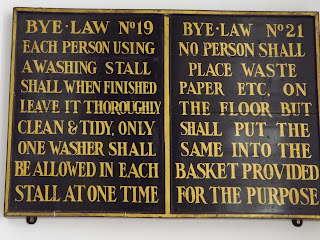To address the issues of hygiene and sanitation, Glasgow became a world leader with the development of wash houses. These were not only for bodies, but some were also for the cleaning of clothing. These latter wash houses, the pre-runners of today’s laundromats, became known colloquially as “the steamie”
Women would gather up all of the dirty clothing, bedding, tin tub and soap and pile it all into the baby’s pram then take it along to the “steamie” to do their laundry. Clothes and bedding were put into large boilers along with some soap. The steam from the boilers gave way to the nickname of “steamie” The floors were generally always soaking wet and the air hot and humid from the boilers. Washing was taken out of the boiler using large tongs. It was then rinsed in the porcelain sink to remove soap.
From the sink, the washing was put through the wringers to remove as much water as possible. One more rinse in the sink to remove the remaining soap and a final trip through the wringer and the clothes were ready to be dried. Most women took the wet washing back home and hung it out to dry. Women in the Calton, Bridgeton or parts of Hutchesontown may have taken their wet wash to the Drying Green at Glasgow Green where it could be hung or laid out on the grass to dry.
The “Steamie” was not only a place to wash laundry but also to socialize. Women were assigned a day of the week and so it was the same women each week that you would spend your afternoon/evening with. This allowed people to get caught up on the neighbourhood gossip or share news. Men had their pubs but women tended to cherish their time with friends at the local “Steamie”.






No comments:
Post a Comment